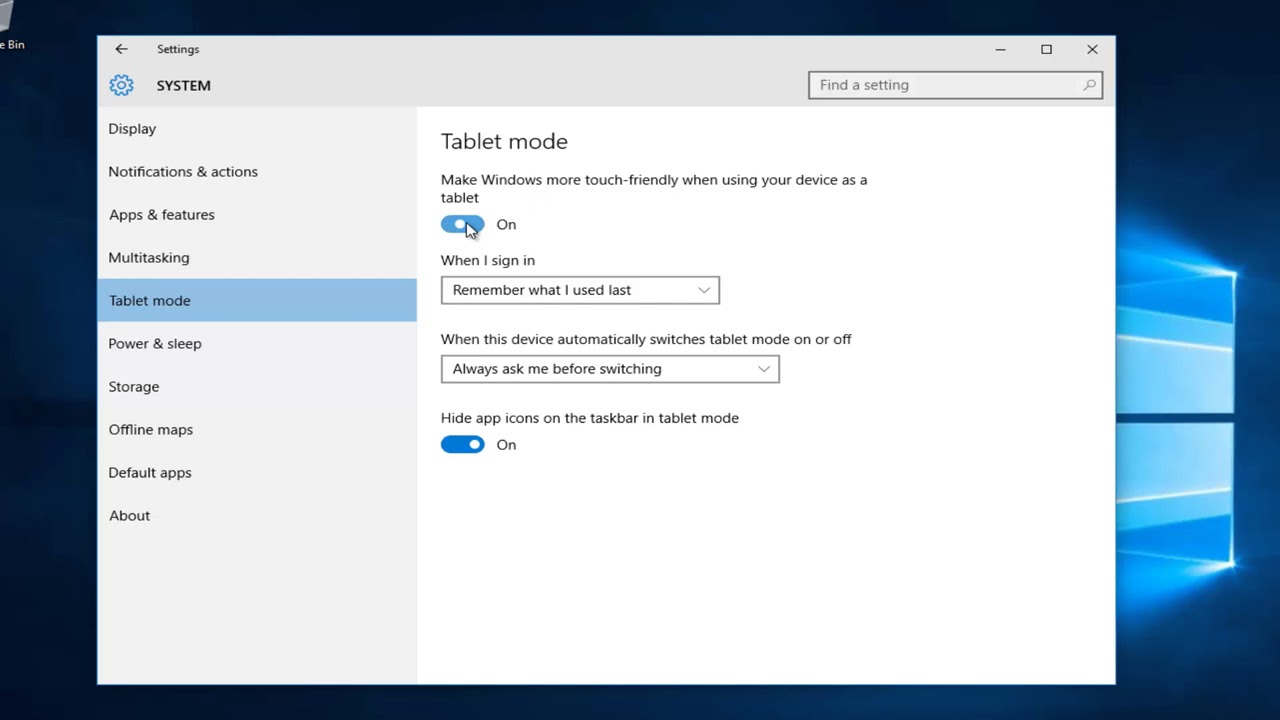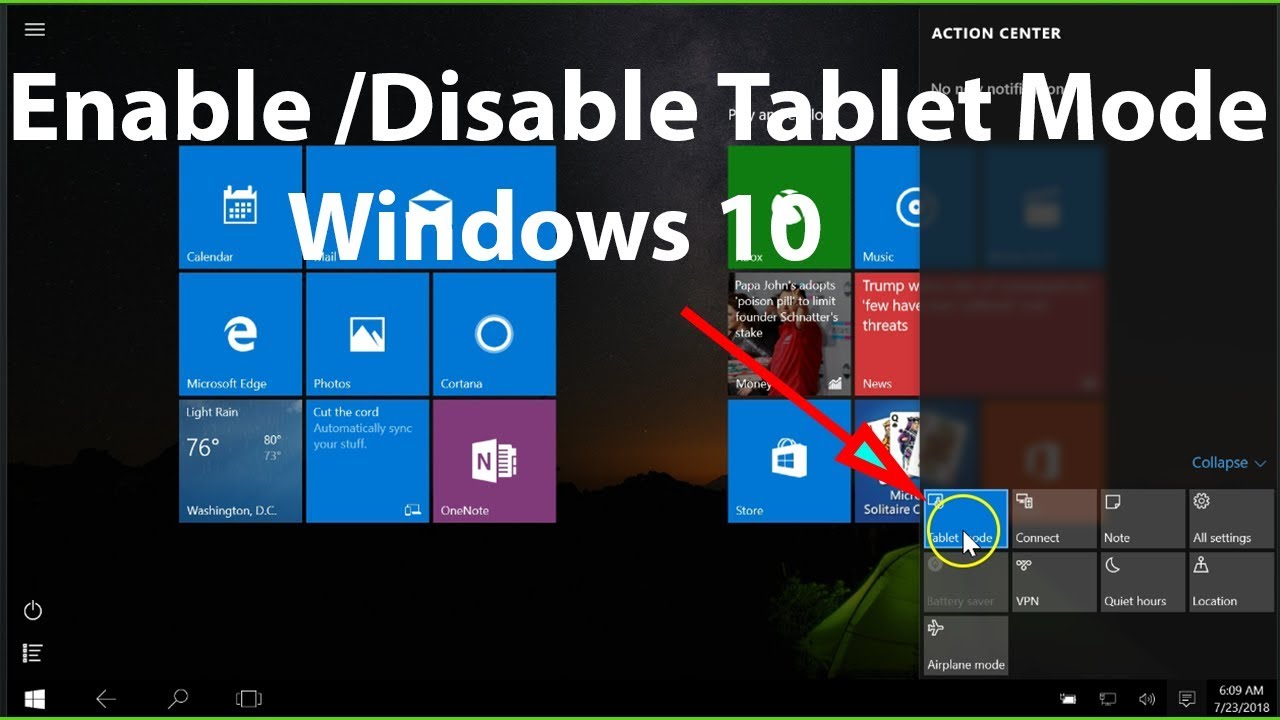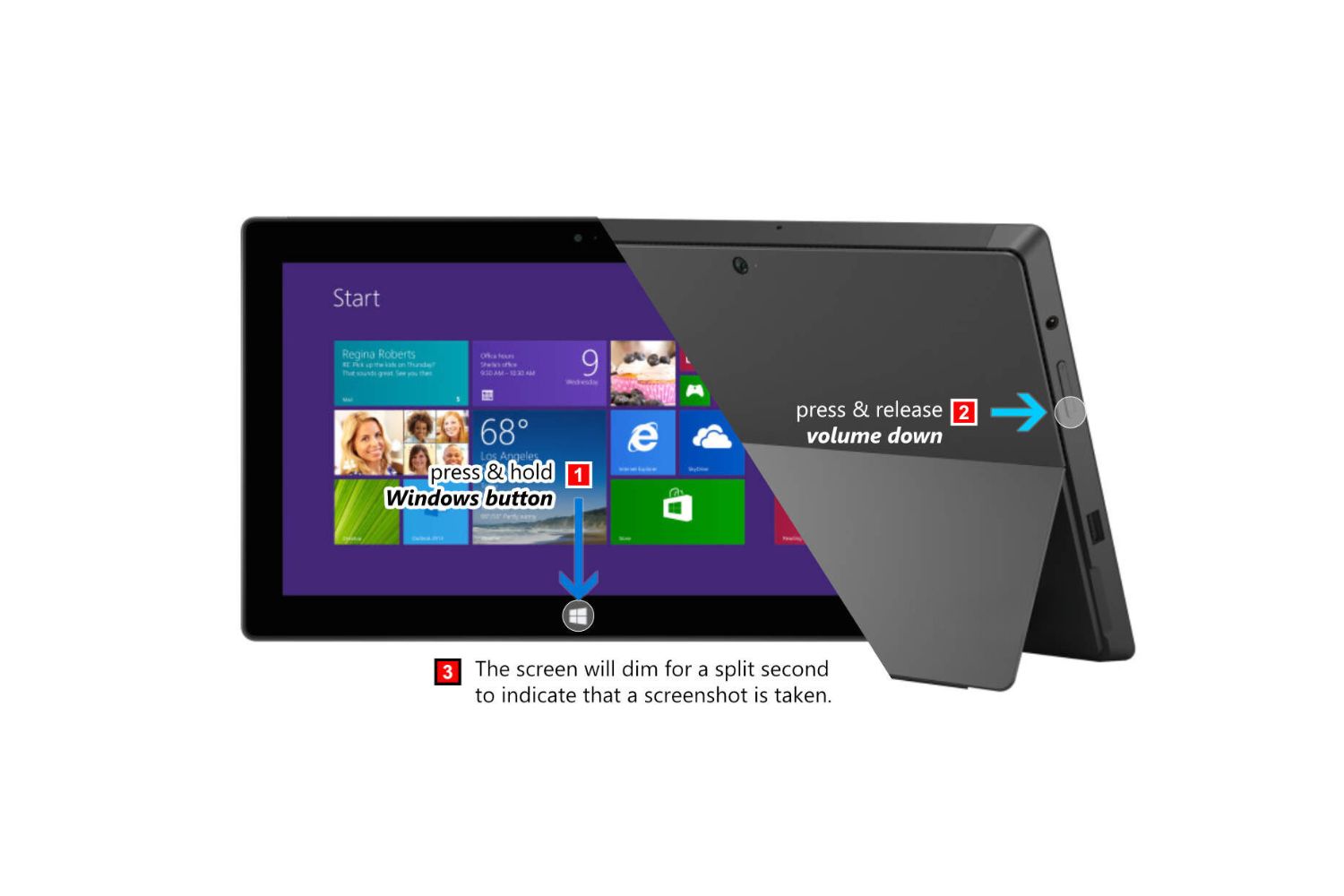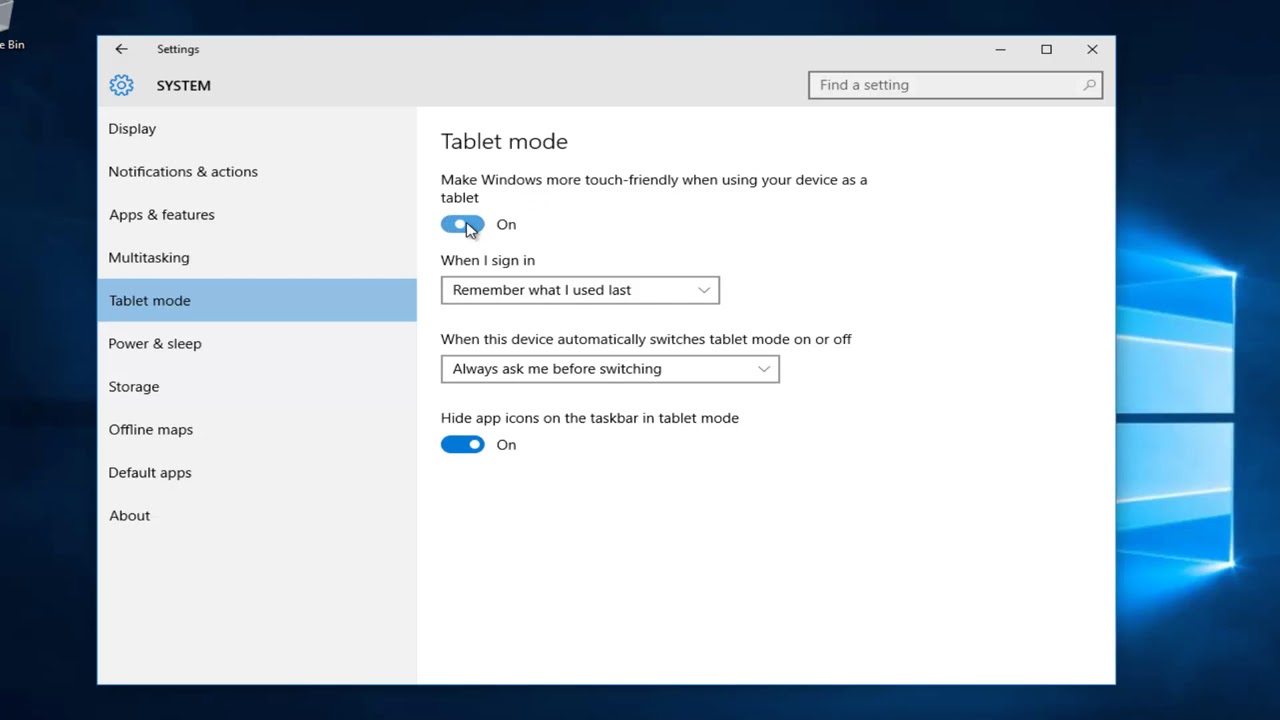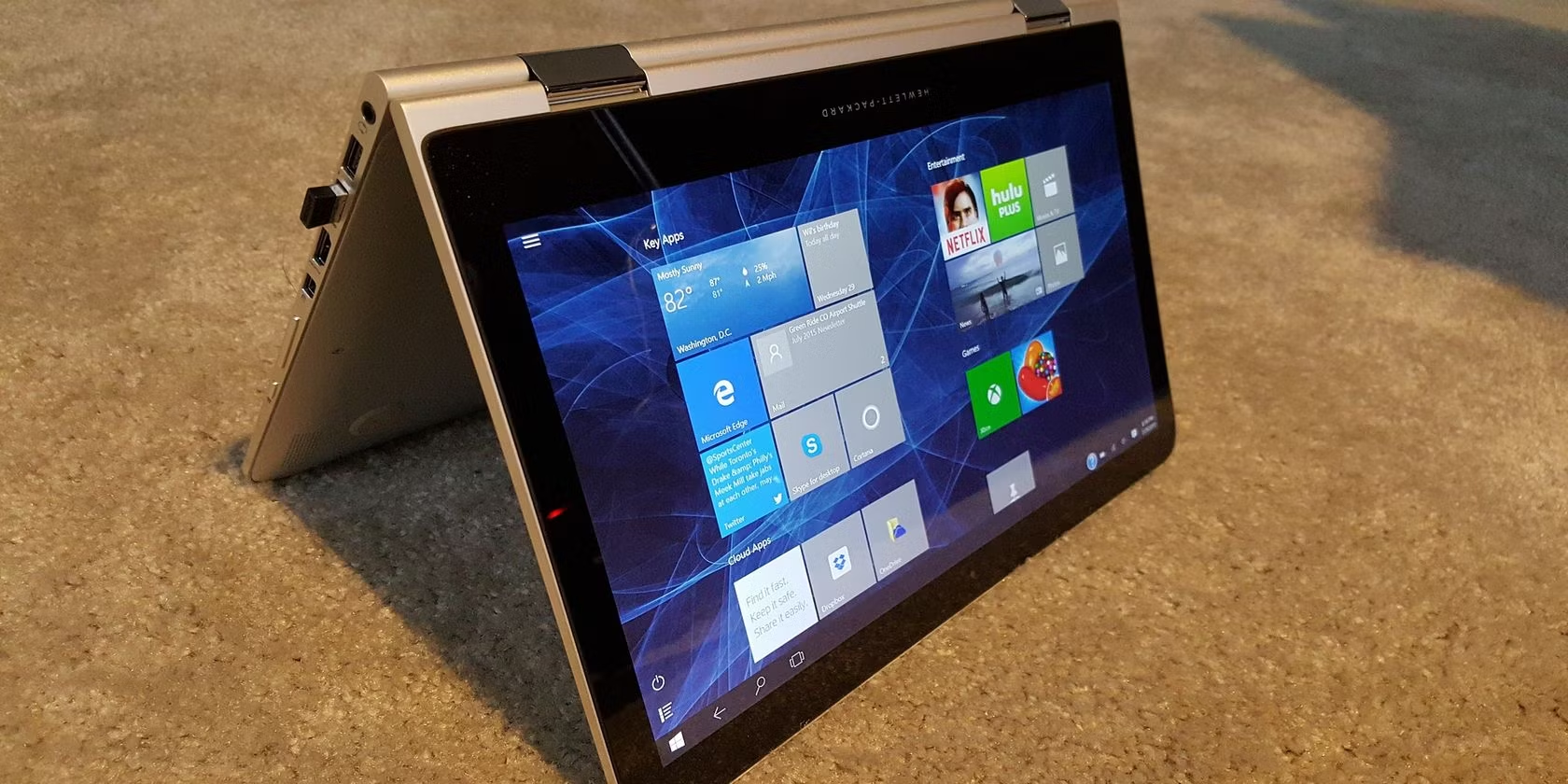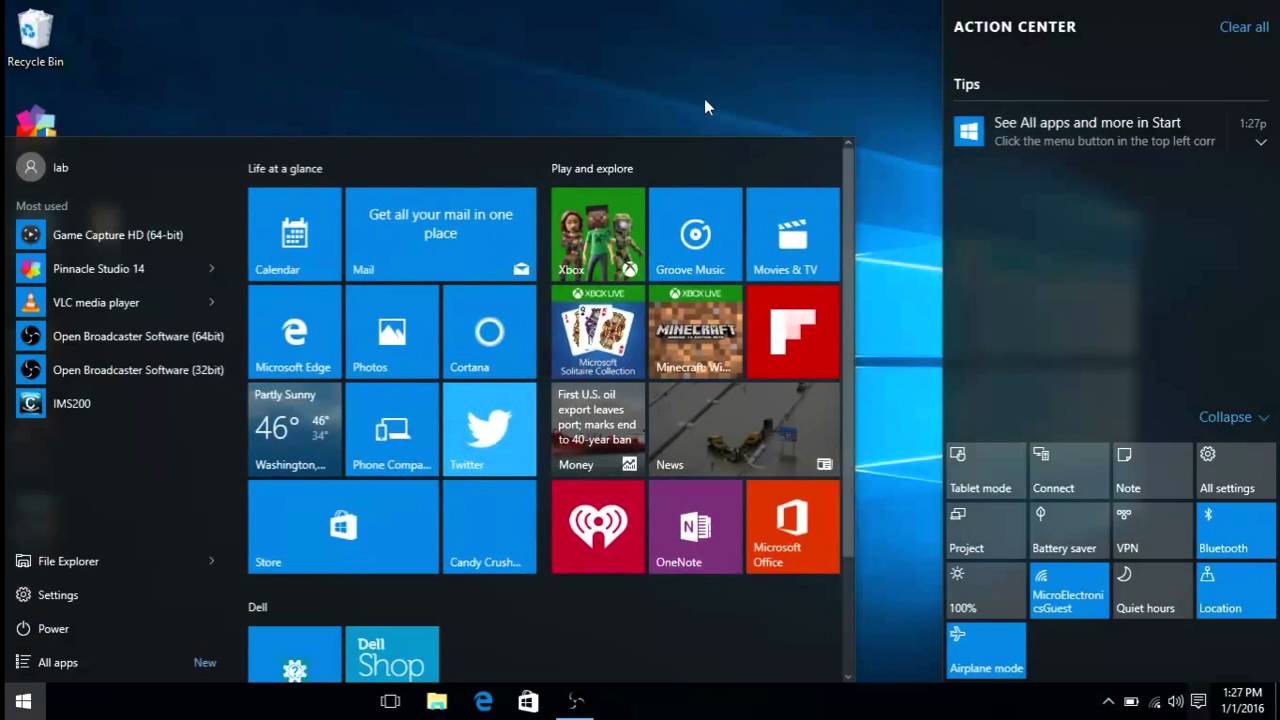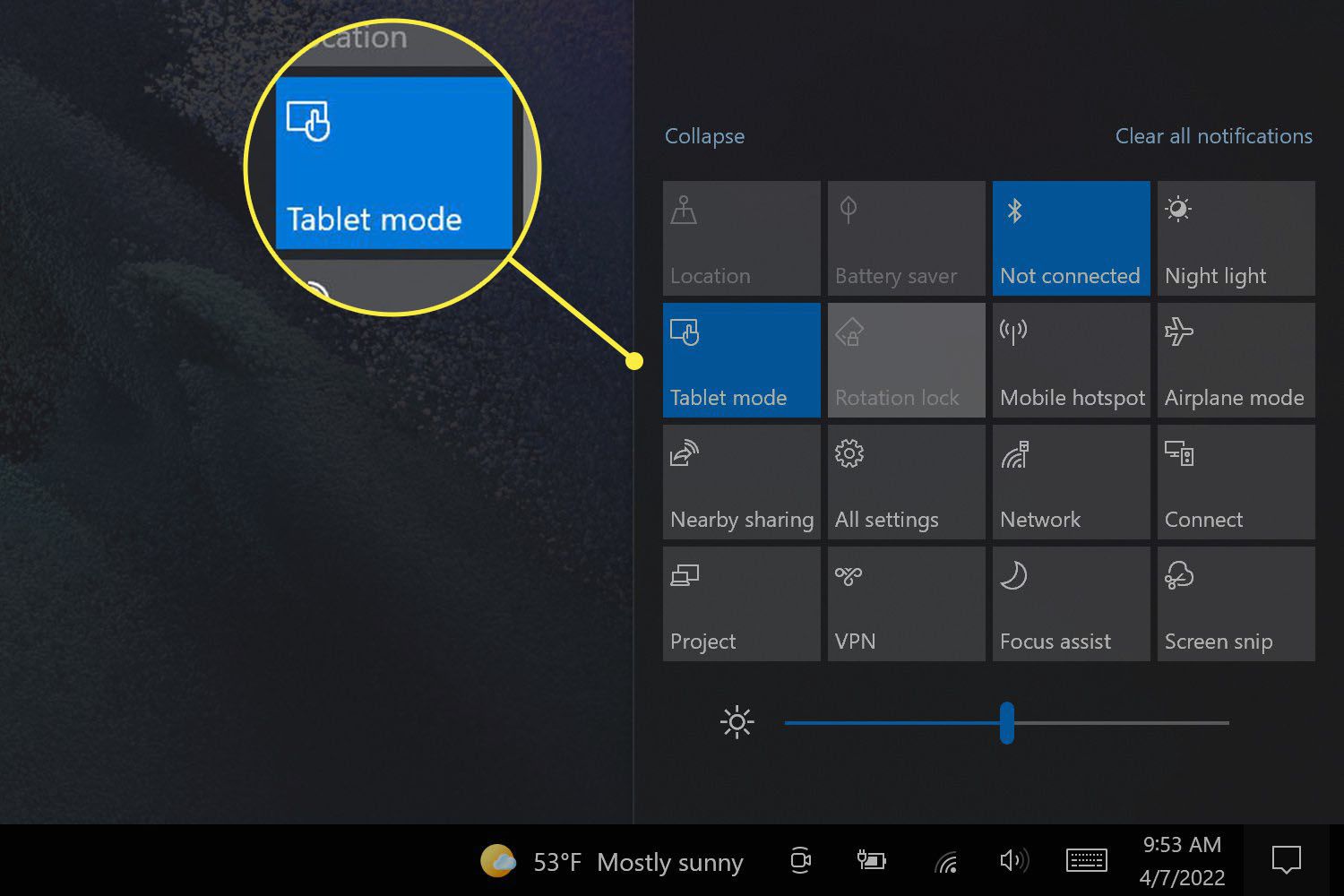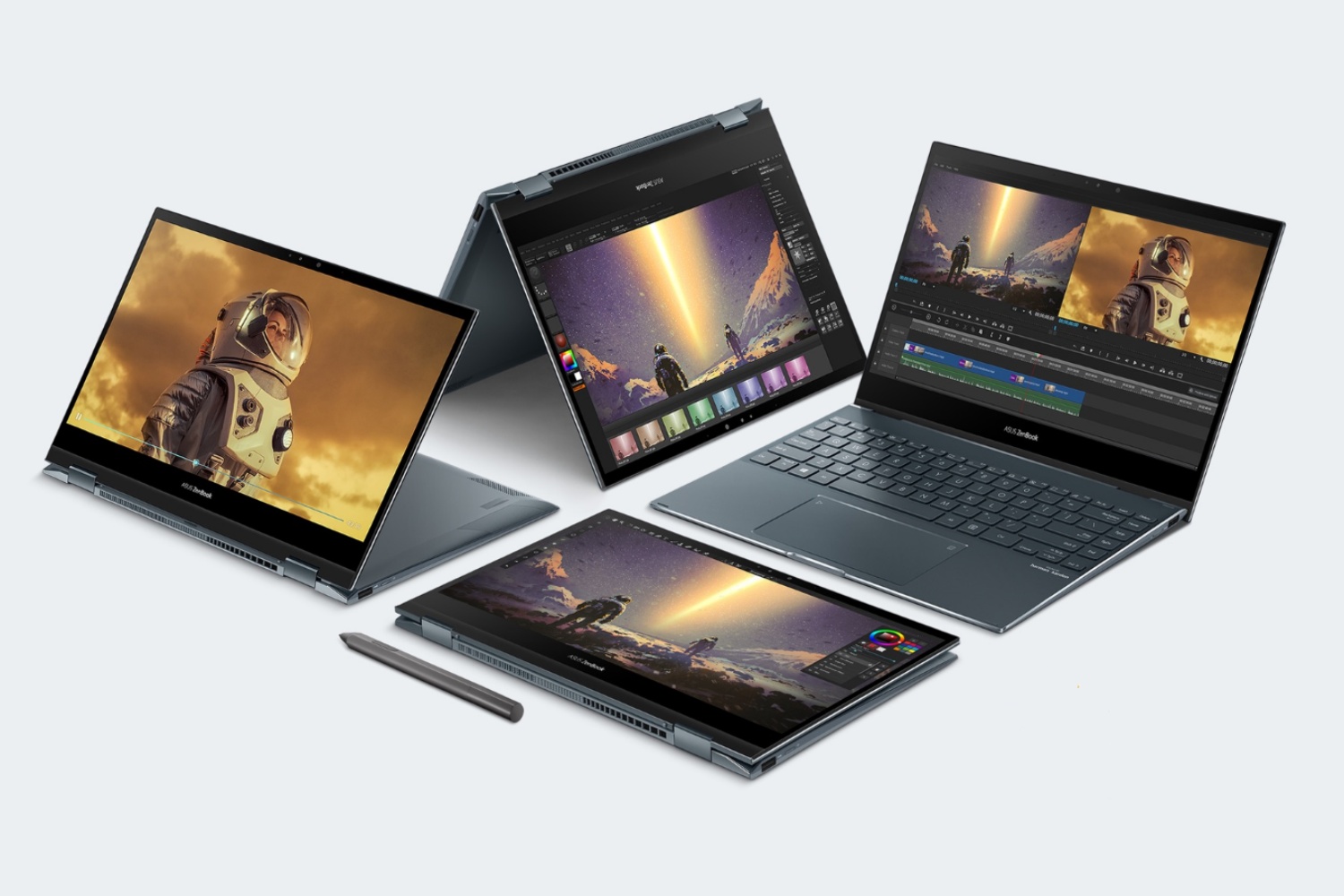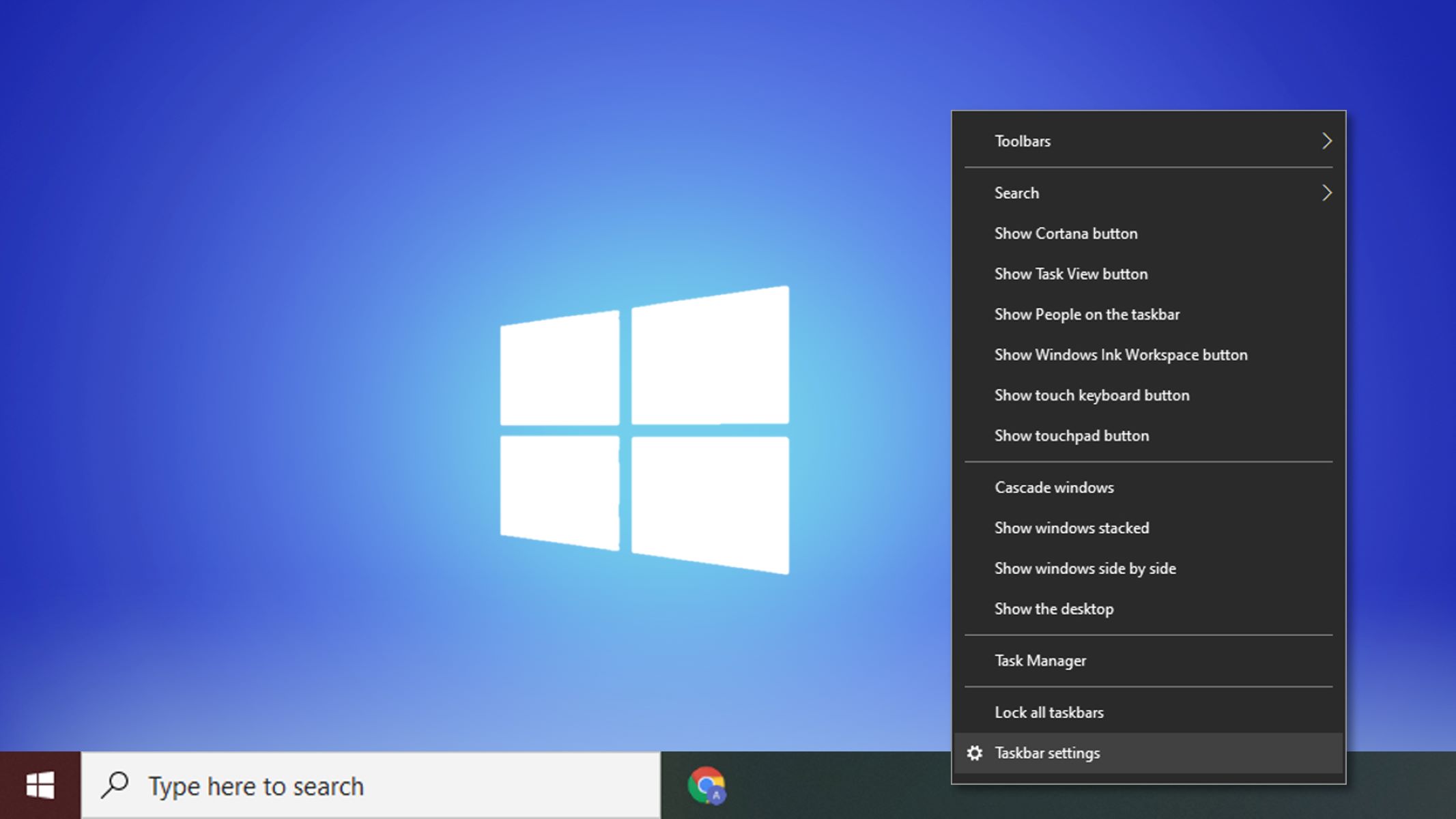Introduction
Welcome to the world of Windows 10! If you’re using a device with touch capabilities like a tablet or a 2-in-1 laptop, you might have encountered the Tablet Mode feature. Tablet Mode is a special user interface designed to enhance your experience when using your device as a tablet. It optimizes the layout, touch gestures, and app behavior to provide a more fluid and touch-friendly experience.
While Tablet Mode can be useful in certain scenarios, there may be times when you prefer to switch back to the traditional desktop mode. Maybe you’re using a keyboard and mouse, or you simply find the Tablet Mode interface too different from what you’re used to. Whatever the reason, changing out of Tablet Mode in Windows 10 is a quick and straightforward process.
In this article, we’ll explore different methods to switch out of Tablet Mode. Whether you want to temporarily switch back to desktop mode or make it a permanent setting, we’ve got you covered. Let’s dive in and discover how to easily change out of Tablet Mode in Windows 10.
Understanding Tablet Mode in Windows 10
Before we delve into how to change out of Tablet Mode, let’s take a moment to understand what Tablet Mode is all about. Tablet Mode is a specialized user interface in Windows 10 that optimizes your device for touch input and allows you to use it as a tablet. When you switch to Tablet Mode, Windows 10 makes a few changes to enhance the touch experience.
In Tablet Mode, the Start menu expands to full screen, making it easier to navigate with touch gestures. The taskbar icons are also spaced out, making them larger and more touch-friendly. Additionally, the virtual keyboard becomes available for text input whenever needed.
Tablet Mode also affects the behavior of apps. Apps launched in Tablet Mode open in full-screen mode by default, allowing you to maximize the available screen real estate. Additionally, the controls and buttons within apps adapt to touch interactions, making them easier to use with your fingers.
Tablet Mode in Windows 10 can be automatically enabled or disabled based on the device’s configuration. For example, if you detach a keyboard from a 2-in-1 device, it will automatically switch to Tablet Mode. Similarly, reattaching a keyboard will prompt Windows 10 to switch back to the desktop mode.
Understanding Tablet Mode is essential for efficiently navigating your device when using it as a tablet. Now that we have a grasp of what Tablet Mode entails, let’s explore how to switch out of it in Windows 10.
Why You Might Want to Change Out of Tablet Mode
While Tablet Mode can be beneficial for touch-centric interactions, there are several scenarios where you might want to switch out of it and return to the traditional desktop mode. Here are a few reasons why you might prefer to change out of Tablet Mode in Windows 10:
- Using a Keyboard and Mouse: If you have a keyboard and mouse connected to your device or are using a desktop computer, you may find it more comfortable and efficient to work in the desktop mode. The traditional desktop layout provides a familiar interface for navigating and multitasking with a keyboard and mouse.
- Working with Traditional Applications: While many apps are optimized for touchscreens, some older or specialized applications may not be fully compatible with Tablet Mode. Switching to desktop mode ensures that you have access to all the features and functionality of these applications without any limitations.
- Utilizing Multiple Windows: Tablet Mode focuses on full-screen apps, which can make it challenging to work with multiple windows simultaneously. If you need to view and work with multiple applications side by side, switching to the desktop mode provides a better multitasking experience.
- Preference for Desktop Layout: Some users simply prefer the layout and aesthetics of the traditional desktop mode. If you find the Start menu and taskbar in Tablet Mode too different or disruptive to your workflow, switching back to the desktop mode can provide a more familiar and comfortable environment.
These are just a few examples of why you might want to change out of Tablet Mode in Windows 10. Whether it’s for compatibility reasons, productivity needs, or personal preference, transitioning to the desktop mode allows you to work in a way that suits your style and requirements.
Changing Out of Tablet Mode Using the Action Center
Windows 10 provides a convenient way to switch out of Tablet Mode using the Action Center. The Action Center is a handy panel that gives you quick access to various system settings and notifications. Here’s how to change out of Tablet Mode using the Action Center:
- Swipe in from the right edge of the screen or click on the “Action Center” icon in the taskbar to open the Action Center panel.
- In the Action Center, you’ll find a tile labeled “Tablet Mode.” If Tablet Mode is currently enabled, the tile will be highlighted.
- Click on the “Tablet Mode” tile to toggle it off. Alternatively, you can tap on the tile if you’re using a touchscreen.
- Once you disable Tablet Mode, Windows 10 will automatically switch to the desktop mode, allowing you to work with a traditional interface.
That’s it! With just a few clicks or taps, you can switch out of Tablet Mode using the Action Center in Windows 10. This method is quick and accessible, making it ideal for those who frequently switch between Tablet Mode and desktop mode.
Note: The availability of the Tablet Mode tile in the Action Center may vary depending on your device configuration and Windows 10 version. If you don’t see the Tablet Mode tile, you can still switch out of Tablet Mode using alternative methods.
Changing Out of Tablet Mode Using the Settings Menu
Another way to switch out of Tablet Mode in Windows 10 is through the Settings menu. This method offers a more in-depth approach to adjusting various system settings. Follow these steps to change out of Tablet Mode using the Settings menu:
- Click on the “Start” button in the taskbar to open the Start menu.
- Click on the “Settings” gear icon, which is located above the power button in the Start menu.
- In the Settings menu, select the “System” option.
- In the left-hand menu, click on “Tablet” to access the Tablet settings.
- In the Tablet settings pane, locate the section labeled “When I sign in” and select the “Use desktop mode” option.
- Close the Settings menu, and Windows 10 will automatically switch to the desktop mode.
By following these steps, you can easily change out of Tablet Mode using the Settings menu in Windows 10. This method provides a more comprehensive approach to customizing your device’s settings while transitioning to the desktop mode.
Keep in mind that the exact options and layout of the Settings menu may vary depending on your Windows 10 version or device manufacturer. However, the overall process of changing out of Tablet Mode through the Settings menu should remain relatively similar.
Changing Out of Tablet Mode Using the Windows Key + A Shortcut
If you prefer using keyboard shortcuts, you’ll be pleased to know that Windows 10 offers a handy shortcut to quickly switch out of Tablet Mode. By using the Windows key and the A key together, you can easily transition from Tablet Mode to the desktop mode. Here’s how to do it:
- Press the Windows key on your keyboard to open the Start menu or bring up the Start screen.
- Press the A key while holding down the Windows key.
Instantly, Windows 10 will switch from Tablet Mode to the desktop mode, allowing you to work in a traditional interface.
The Windows key + A shortcut is a quick and efficient way to toggle between Tablet Mode and desktop mode without the need to navigate through menus or settings.
Please note that the availability of this shortcut may depend on your Windows 10 version and device manufacturer. If this shortcut doesn’t work for you, you can use alternative methods to switch out of Tablet Mode.
Changing Out of Tablet Mode in Specific Apps
While Tablet Mode provides a touch-friendly interface for apps, there may be instances where you want to switch to desktop mode for specific applications. Windows 10 allows you to customize the behavior of individual apps, giving you more flexibility. Here’s how to change out of Tablet Mode in specific apps:
- Open the app for which you want to switch to desktop mode.
- Once the app is open, locate the “…” (three dots) or “More” icon, usually found in the top-right or top-left corner of the app’s window. Click or tap on this icon to access the app’s menu.
- Look for an option like “View in desktop mode” or “Open in desktop mode” within the app’s menu. The wording may differ depending on the app.
- Select the appropriate option to switch the app to desktop mode.
By following these steps, you can change out of Tablet Mode for specific apps, allowing you to have more control over your preferred interface within those applications.
It’s important to note that not all apps may have the option to switch to desktop mode. The availability of this feature depends on the app developer’s implementation.
Additionally, if you frequently use certain apps in desktop mode, you can set the default behavior for those apps. To do this, follow these steps:
- Go to the Settings menu by clicking on the “Start” button, selecting Settings, and navigating to the “System” section.
- Within the “System” section, choose “Tablet” from the left-hand menu.
- Scroll down to the “Automatically hide the taskbar in tablet mode” section.
- Under “Choose how you open apps,” select the dropdown menu and choose “Desktop mode” for the apps you want to open in desktop mode by default.
By customizing the behavior of apps and setting specific apps to open in desktop mode, you can have more control over your preferred interface within each application.
Conclusion
Switching out of Tablet Mode in Windows 10 is a straightforward process that allows you to transition from a touch-centric interface to the more traditional desktop mode. Whether you prefer using a keyboard and mouse, need to work with legacy applications, or want to utilize multiple windows, changing out of Tablet Mode provides a more familiar and versatile computing experience.
In this article, we explored different methods for changing out of Tablet Mode in Windows 10. You learned how to utilize the Action Center to toggle Tablet Mode on or off with just a few clicks or taps. We also discussed how to access the Settings menu to change the default behavior and switch to desktop mode. Additionally, we covered the Windows key + A shortcut for a quick transition from Tablet Mode to desktop mode. Lastly, we explored the option of switching to desktop mode within specific apps for a more tailored experience.
By understanding the various options available to switch out of Tablet Mode, you have the flexibility to adapt your Windows 10 device to your specific needs and preferences. Whether you’re using a tablet or a 2-in-1 device, being able to seamlessly transition between Tablet Mode and desktop mode ensures an optimal and personalized computing experience.
So, next time you find yourself in Tablet Mode and need to switch to the desktop mode, remember the methods discussed in this article. Enjoy the versatility and convenience of Windows 10 as you effortlessly navigate between Tablet Mode and the traditional desktop interface.







